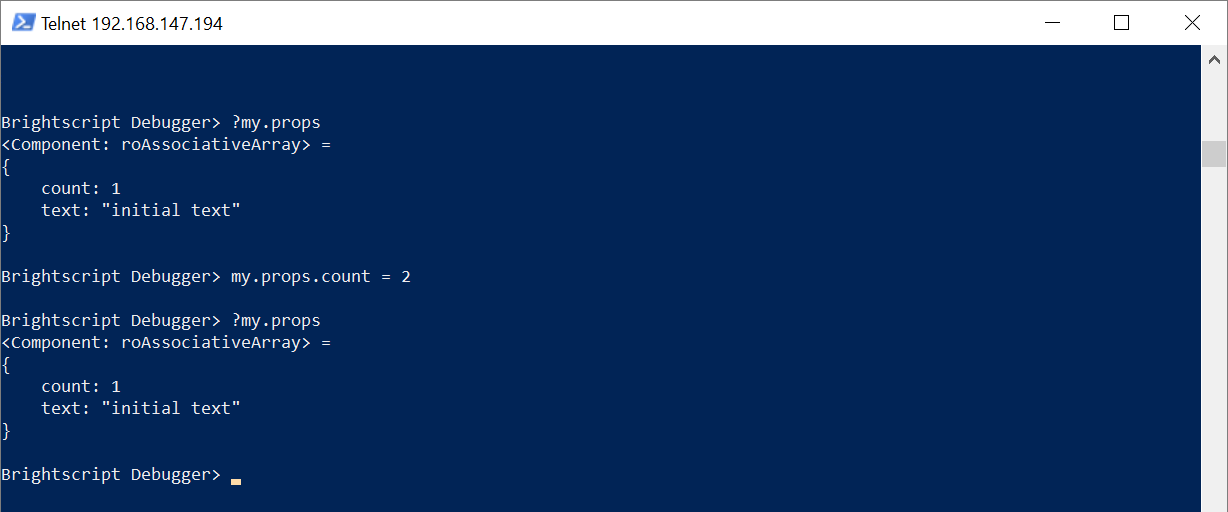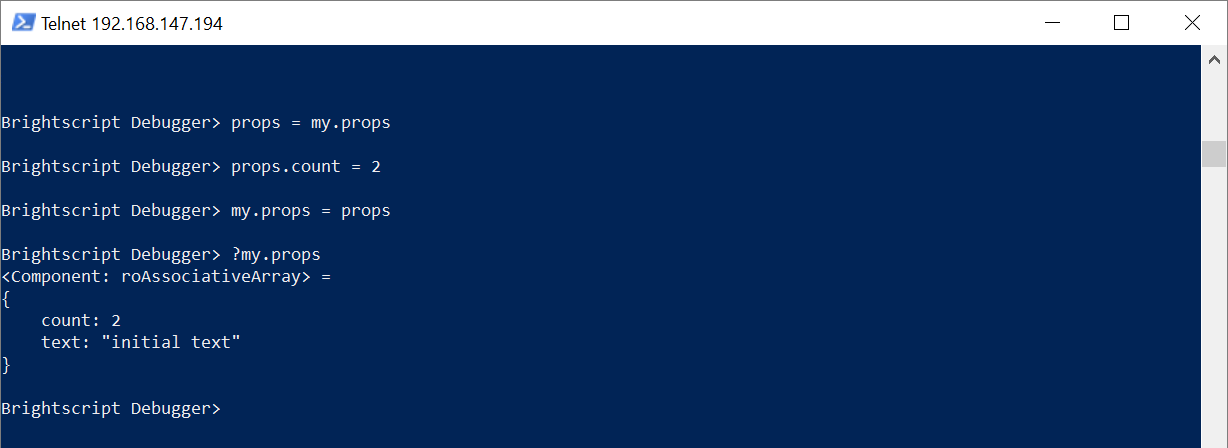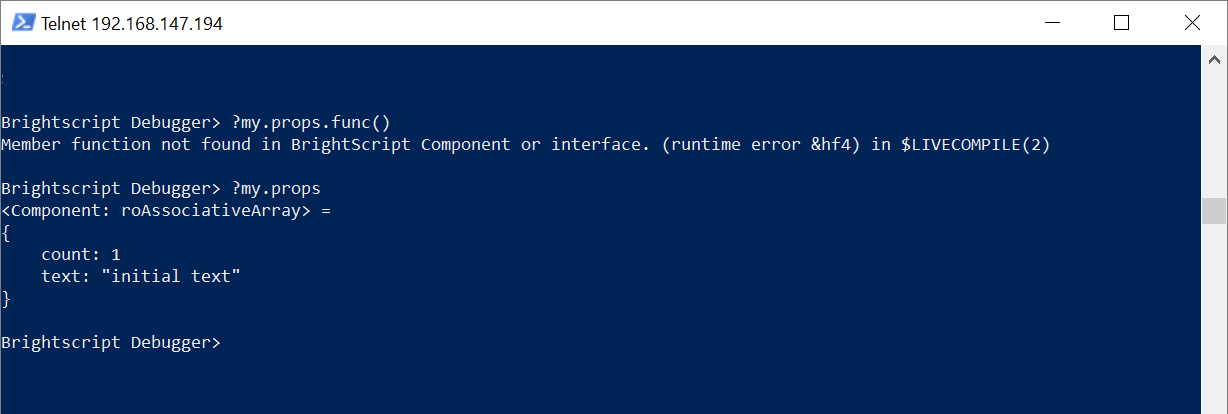Roku: Nodes and Associative Array fields
Like a lot of other languages, BrightScript passes 'intrinsic' types by value and 'object' types by reference. In fact, their documentation shows an example of how this works:
function Modify(a as Integer, b as Object) as Void
a = 43
b.first = 6
end function
'.....
x = 42
y = { first: 1, second: 2 }
Modify(x, y)
' now x is still 42 but y.first is 6
As you can see, y was an associative array that got passed to the Modify() function. The Modify() function changed one of the properties on the y object, and since it was passed by ref, the original y object was updated.
But did you know that this is only true some of the time? Consider a simple component like this:
<?xml version="1.0" encoding="utf-8" ?>
<component name="MyComponent" extends="Group">
<script type="text/brightscript" uri="pkg:/components/MyComponent.brs"/>
<interface>
<field id="props" type="assocarray"/>
</interface>
</component>
This component defines a single additional field called props that is of type assocarray. We use this component like this:
my = m.top.findNode("my")
my.props = {
text: "initial text"
count: 1
}
And when we inspect the value, it is what we would expect:

Pretty straight-forward so far. And since we learned that AAs are passed by ref, we can modify the value like this:
my.props.count = 2
And when we inspect the value:

Wait, what?! We just set the value of the count property to 2, so why is it reporting it as 1?
The answer is that AAs are 'deep-copied through fields (pass-by-value)'. So in the special case where the AA is a field on a node, it is not passed by ref, but is instead copied. So when we did this:
my.props.count = 2
what really happened is that my.props returned a copy of the AA, on which we set the count property to 2. When we inspected my.props again, it was yet another copy which of course did not contain the changes.
So how do you actually update a property on an AA like this? You don't 😜 Instead, you have to update the entire AA. The common pattern is:
props = my.props
props.count = 2
m.props = props
Here we get a copy of the AA, update it, and then set the node's field to the new AA. We can see that by doing this, the AA now reports the correct values:

There is one other caveat to this copying behavior. Consider a normal AA like this:
props = {
text: "initial text"
count: 1
func: function()
return "func called"
end function
}
This AA defines func as a function, and when we call it, we get the expected results:

But if we set this AA as a node field and call it:
props = {
text: "initial text"
count: 1
func: function()
return "func called"
end function
}
my = m.top.findNode("my")
my.props = props

The call fails, and when we inspect the AA, we see that the func property does not even exist! Every time the AA is copied, any function properties are silently stripped out (presumably to make them 'data-only' so that they can be marshalled across thread boundaries if necessary). Definitely something to watch out for since the debugger does not give any kind of hint that this has happened until you try to access the now-missing function.
As you might imagine, all of this has some substantial performance implications, especially when copying AAs across thread boundaries. Stay tuned for another post that dives deep into how to deal with those situations and some recommendations on best practices to ensure optimum performance.